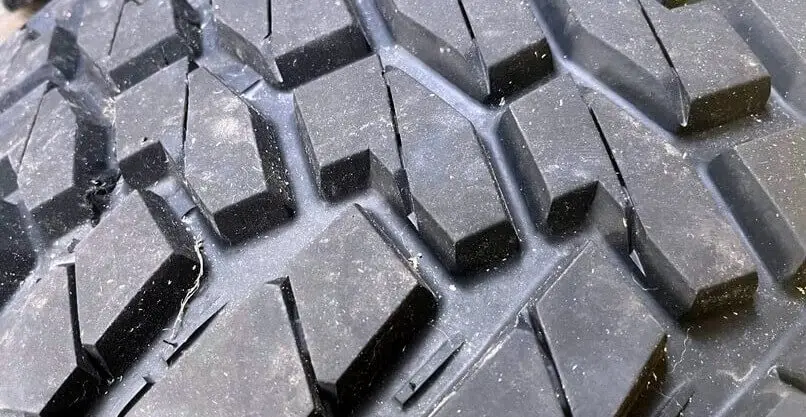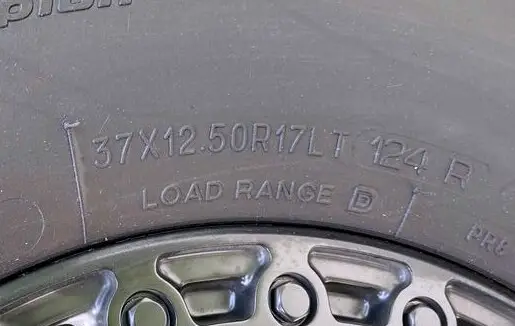Tire Size 37×12.5r17 to Metric

Do you ever look at a tire size and wonder what it all means? 37×12.5R17 is a strange combination of numbers and letters, but it holds a wealth of essential information about your tires. Let’s break it down and find out what it all means.
Dimension Breakdown
37×12.5R17: A perplexing string of numbers and a letter, right? Not once you get to know them.
- 37 refers to the tire’s overall diameter in inches.
- 12.5 denotes the tire width, again in inches.
- R stands for Radial construction, the most common type of tire construction today.
- 17 is the wheel diameter in inches, that is, the size of the wheel that the tire is designed to fit.
In essence, a 37×12.5R17 tire is a radial tire that is 37 inches in diameter, 12.5 inches wide and fits a 17-inch wheel.
37×12.5r17 in inches
| Feature | Metric |
|---|---|
| Tire Diameter | 37.0″ |
| Tire Section Width | 12.5″ |
| Rim Width Range | 17″ x 8.5-11″ |
| Sidewall Height | 10.0″ |
| Circumference | 116.2″ |
| Revs/Mile | 545 |
Conversion Process
Now that we’ve broken down the dimensions let’s delve into converting these figures from the Imperial system to the Metric system.
- Overall Diameter: A 37-inch diameter equals 939.8 millimeters (since 1 inch equals 25.4 millimeters).
- Tire Width: A 12.5-inch width converts to 317.5 millimeters.
- Wheel Diameter: A 17-inch wheel diameter translates to 431.8 millimeters.
To find the Sidewall Height and Aspect Ratio, we use the following formulas:
- Sidewall Height in inches = (Overall Diameter – Wheel Diameter) / 2
- Aspect Ratio = (Sidewall Height / Tire Width) * 100%
For our 37×12.5R17 tire, the sidewall height is (37-17)/2 = 10 inches or 254 millimeters. The aspect ratio is (10/12.5)*100% = 80%.

Finding a Close Metric Equivalent
Finding a metric equivalent for a 37×12.5R17 tire size isn’t straightforward, given the complexity of tire sizes. However, a tire with a similar diameter and aspect ratio, albeit with a different width, is the metric size 315/80R17. This tire is 315mm wide, has an 80% aspect ratio, and fits a 17-inch wheel.
Practical Applications
The 37×12.5R17 tire size is popular among off-road enthusiasts and is often used on large vehicles like SUVs and trucks. For example, Jeep Wranglers, renowned for their off-road capabilities, often use this tire size.
Given their large diameter and width, these tires provide excellent traction and stability, making them perfect for rugged, uneven terrain.
What Is Equivalent To A 37×12.5r17?
The tire with a size of 37×12.5r17, when converted to the metric system, is approximately equal to 318/80r17. However, it is worth noting that this specific size is not commonly found for sale.
If you are searching for a similar metric size that is more readily available, you might consider the 315/80r17 tire. This alternative size has dimensions that are comparable to the 37×12.5r17 tire.
How Tall Are 37×12.5r17?
The ’37’ in the tire size refers to the tire’s overall diameter in inches. So, a 37×12.5R17 tire is approximately 37 inches tall.
How Wide Is A 37×12.5r17 Tire?
The ‘12.5’ in the tire size refers to the width of the tire. This means a 37×12.5R17 tire is approximately 12.5 inches wide.
What Size Rim Fits A 37×12.5r17?
The ’17’ in the tire size refers to the wheel diameter (rim) on which the tire should be mounted. Therefore, a 37×12.5r17 tire is designed to fit on a 17-inch rim.
However, the width of the rim can vary. Using a rim width of approximately 8.5 to 11 inches is recommended, but always consult your tire or vehicle manufacturer for specific guidelines.
Summary
Understanding tire sizes, such as 37×12.5R17, isn’t as intimidating as it may seem. These numbers and letters provide valuable insights into your tire’s size and construction.
Converting these dimensions to the metric system offers a broader perspective and aids in finding equivalent metric tire sizes. The practical application of this knowledge is evident in real-world scenarios, such as selecting the appropriate tire for your off-road adventure.
Understanding tire sizes equips you with the information necessary to make informed decisions, enhancing your vehicle’s performance and overall driving experience.

Meet Caitlin McCormack, a Tire Size Expert and Blogger Passionate About Everything Related to Tires. With Years of Experience in the Tire Industry, Caitlin Has Become an Expert in Tire Sizes and Their Impact on Vehicle Performance.
